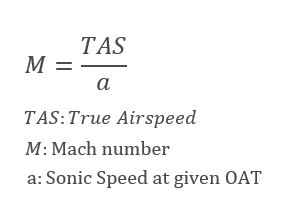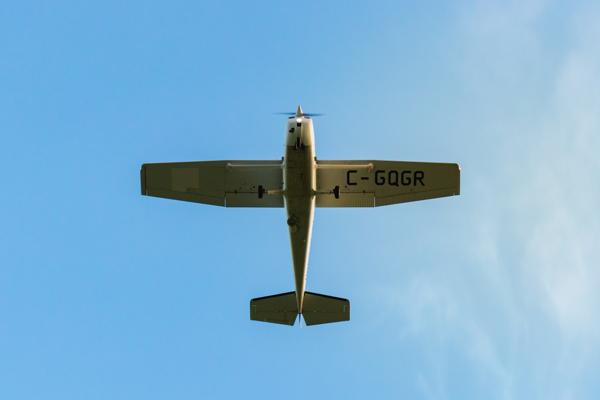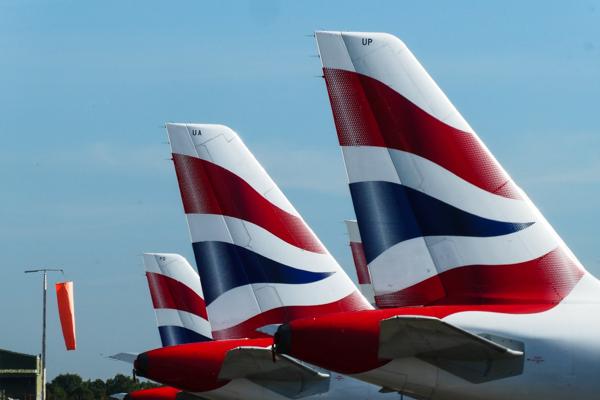Convert between Calibrated Airspeed (CAS), Equivalent Airspeed (EAS), True Airspeed (TAS) and Mach number (M) using the tool below. You need to specify the altitude at which you would like to perform the calculation as well as any one of the four airspeeds.
Use the sliders to select an input speed and whether to apply a temperature deviation offset from the standard atmospheric value. The model is based on the US Standard Atmosphere of 1976.
Calculation Methodology
Indicated Airspeed
Indicated airspeed is the airspeed reading that the pilots sees on her airspeed indicator (ASI) and is driven by the pitot-static system on board the aircraft. The system uses the difference between the total pressure (measured by the pitot probe) and the static pressure (measured by the static ports) to determine the dynamic pressure which is converted to an airspeed reading.
The pitot-static system works on the principle of Bernoulli’s equation which states that an increase in the speed of a fluid must simultaneously result in a drop in the fluid’s pressure, or a decrease in the fluid’s potential energy.
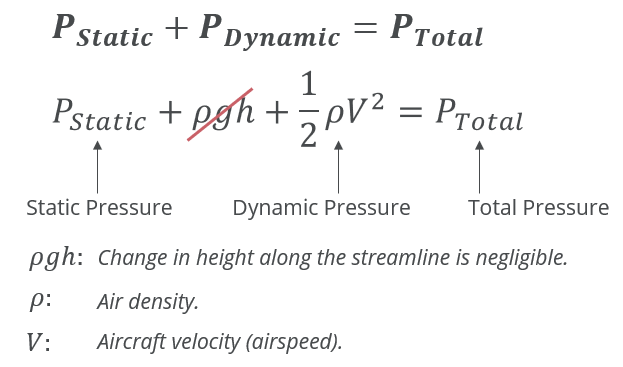
The total pressure (also known as the stagnation pressure or pitot pressure) is measured by the pitot probe. The moving air enters the probe and is brought to rest by the geometry of the probe.
The measured static pressure is the ambient pressure of the still air which is the barometric pressure of the air at the aircraft’s current altitude. The static pressure is not only used to calculate the airspeed but also the altitude (altimeter) and the vertical speed (VSI) during flight. The static ports are always installed flush which ensures that the port opening is inside the boundary layer where the air is not moving.
The airspeed is therefore calculated as follows: 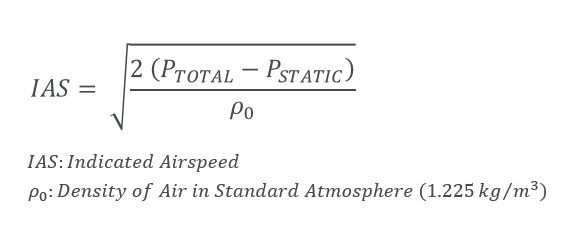
The density term in the denominator is not a constant and varies with altitude and temperature. However, the airspeed indicator in the cockpit is always calibrated to sea level density on a standard day. Thus the actual airspeed (true airspeed) will vary considerably from the indicated airspeed as the aircraft flies at higher altitudes and differing temperatures.
The big advantage of using IAS in the cockpit is that the aircraft will always stall at the same indicated airspeed (for a given aircraft configuration) regardless of the altitude or ambient temperature. This makes it much easier for a pilot to fly the aircraft as the critical speeds that define the operating envelope remain the same regardless of the ambient conditions.
Calibrated Airspeed
Calibrated airspeed is the indicated airspeed corrected for instrument and position error. This error is a function of both the quality of the pitot-static system used to calculate the dynamic pressure as well as the location of the probe on the aircraft.
Positional errors result from the fact that the local velocity around an aircraft varies as a result of the aircraft's changing geometry. For example, the local velocity over the upper surface of the wing is higher than below the wing in order for lift to be produced. In reality there exists velocity gradients all over the aircraft, especially in regions where there is substantial curvature (forward part of the fuselage, windshield, wing surface).
Depending on the location of the pitot-static system, the measured dynamic pressure measured may differ from the actual dynamic pressure due to local induced velocity effects. The offset between indicated and calibrated airspeed is usually published in the aircraft operating manual in the form of a table. Here is an example of the calibration performed for a two-seat light aircraft.
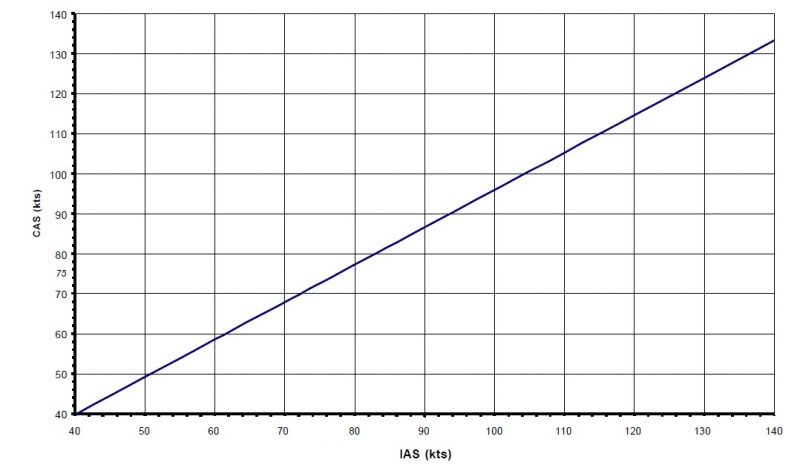
Equivalent Airspeed
Equivalent airspeed is the calibrated airspeed corrected for compressibility effects. It is also defined as the speed at sea level, under ISA conditions, that would produce the same incompressible dynamic pressure that is produced at the true airspeed for the given aircraft altitude. It is this definition that makes EAS a useful airspeed measurement for aeronautical engineers as it provides a convenient way to calculate loading on the airframe, or handling qualities as the dynamic pressure provided is an equivalent sea level pressure without the need to correct for altitude or temperature.
Indicated and Calibrated airspeed is based on the formulation of Bernoulli’s equation, which assumes that the fluid (air in this case) is incompressible. Bernoulli’s experiments were performed in water where this assumption is valid, but compressibility effects in air start to become significant at Mach numbers above 0.3. Divergence between CAS and EAS will be seen at speeds above 200 kts and altitudes above 10 000 ft. CAS must therefore be corrected for compressibility effects to determine EAS as an intermediate step to calculate the True Airspeed (TAS). Compressibility effects can be accounted for through the calculation of the impact pressure, which is a function of the Mach number.
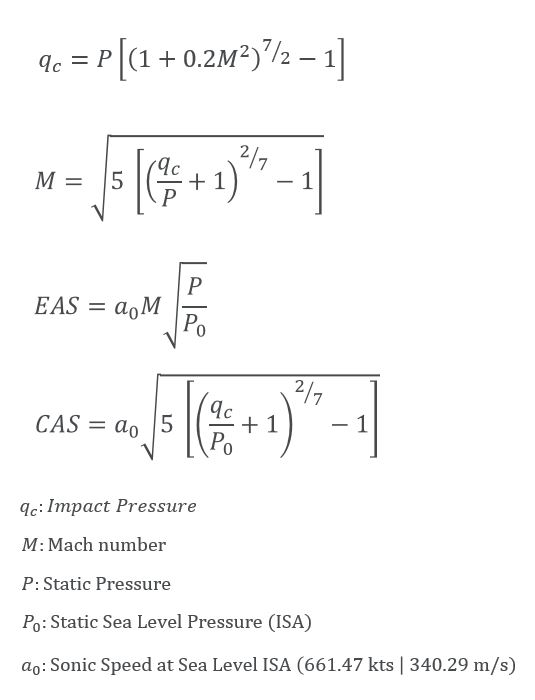
True Airspeed
The true airspeed is the speed that the aircraft travels relative to the air mass in which it is flying. The true airspeed is equal to the ground speed in cases where there is no wind, and is used mostly for flight planning and when quoting aircraft performance specifications. True airspeed can be calculated from either the equivalent airspeed, or the Mach number if the outside air temperature (OAT) is known.

Mach Number
The Mach number is the ratio of the True Airspeed to the sonic speed. The speed of sound in undisturbed air is a function only of temperature and not altitude as is often mistakenly assumed. Of course the ambient temperature will decrease as altitude is increased, leading to the reduction in the speed of sound as with increasing altitude.
